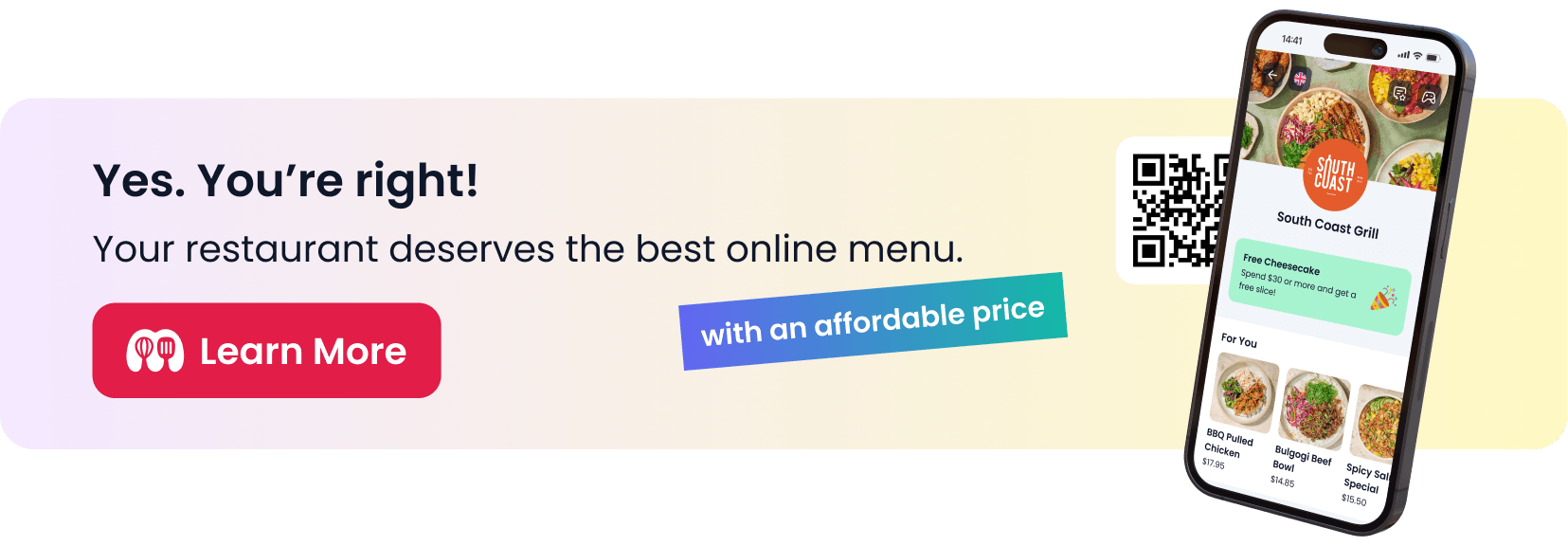

How Much Money Do Restaurant Owners Make Per Month?
Running a restaurant can be both a dream and a challenge for many aspiring entrepreneurs. While the allure of creating a beloved community space and serving delicious meals is strong, the financial reality behind running a successful establishment is often complex. One of the most common questions for both seasoned and new restaurant owners is: how much can you actually earn each month?
The answer isn’t simple, as restaurant owners’ earnings vary widely depending on a range of factors—from the type of restaurant and its location to how well operations are managed. Some owners thrive with substantial profits, while others may struggle to break even.
In this article, we’ll dive into the different elements that influence a restaurant owner’s income, uncover industry averages, and offer strategies to help you maximize your restaurant’s profitability. Whether you’re a current restaurant owner looking to boost earnings or someone planning to open their first eatery, understanding these financial intricacies is key to your success.
Would you like to listen our deep-dive conversation about this article?
What Factors Influence a Restaurant Owner’s Monthly Income?
A restaurant owner’s monthly income is influenced by several variables that go beyond the food served or the number of customers walking through the door. Every aspect of your business—ranging from location to operating costs—affects the bottom line. Understanding these factors can help you manage your business more effectively and increase profitability.
Location: Does Your City or Neighborhood Matter?
The location of your restaurant can have a huge impact on how much money you make each month. A prime location in a busy downtown area may bring in more foot traffic, but it also comes with higher rent and operating costs. On the other hand, a suburban or less central location might be more affordable, but with fewer customers.
- Urban areas vs. suburban locations
- Tourist hubs vs. residential neighborhoods
- Proximity to attractions, offices, or universities
A high-traffic location can increase visibility and customer flow, but it’s important to balance that with higher rent and competition.
Type of Restaurant: Fast Casual vs Fine Dining
The type of restaurant you own significantly affects your monthly earnings. Fast-casual restaurants typically have higher customer turnover and lower menu prices, while fine dining establishments charge more per meal but see fewer customers.
- Fast food and quick-service restaurants (QSRs)
- Casual dining and family-friendly eateries
- Upscale, fine dining experiences
While fast-casual eateries often rely on volume, fine dining makes its profits through higher margins on upscale dishes and drinks.
Size of the Business: Small Bistro or Chain Restaurant
The size and scale of your restaurant also determine your income potential. A single, small bistro might serve fewer customers, while a chain or multi-location operation has the advantage of scale.
- Independent restaurant vs multi-location chain
- Staffing requirements and payroll impact
- Inventory and supply management for larger operations
While larger restaurants and chains have higher earning potential, they also come with greater responsibilities and overhead.
Menu Pricing and Food Costs: Balancing Profit Margins
The pricing of your menu and the cost of ingredients play a critical role in determining your profits. Striking the right balance between affordable prices for customers and maintaining high margins is essential. Restaurants with poor control over food costs may struggle to remain profitable.
- Ingredient sourcing: local vs imported
- Cost-effective menu design (menu engineering)
- Food cost percentage: keeping it below 30%
To maximize income, it’s essential to regularly review food costs, negotiate with suppliers, and design a menu that is both appealing and profitable.
Labor Costs: Impact of Staff Wages on Income
Labor costs are one of the largest expenses for any restaurant. The more staff you need—whether for kitchen operations or customer service—the higher your overhead. Managing labor costs efficiently is key to maintaining healthy profit margins.
- Full-time vs part-time staff
- Minimum wage laws and tipping culture
- Scheduling to match peak business hours
By optimizing staff schedules and controlling labor costs, restaurant owners can better align expenses with revenue, ultimately boosting monthly income.
Operating Hours: How More Hours Can Mean More Money
The hours your restaurant is open directly affect how much revenue you can generate. Extended hours—such as offering breakfast, lunch, and dinner, or staying open late—can increase sales. However, additional hours also mean higher operating costs.
- Breakfast, lunch, and dinner service
- Late-night or weekend hours for bars and pubs
- Cost-benefit analysis of extended hours
Offering services at different times of the day can increase your income, but it’s important to weigh the additional revenue against the increased labor and utility costs.
Market Demand and Seasonality: Peak Times and Off-Seasons
Demand for dining can fluctuate based on various factors, including seasons, holidays, and local events. Seasonal trends can cause drastic changes in income from month to month, especially in tourist-heavy locations.
- Seasonal fluctuations in customer traffic
- Holiday and event-driven demand spikes
- Off-season strategies to maintain cash flow
Planning ahead for slow seasons and capitalizing on peak times can help balance income fluctuations throughout the year.
How to Calculate a Restaurant Owner’s Monthly Earnings
Calculating a restaurant owner’s monthly earnings involves understanding several key financial metrics that contribute to overall profitability. It’s not as simple as looking at revenue—owners need to consider costs, taxes, and profits to get a clear picture of their monthly income. Below, we break down the steps and key factors for calculating monthly earnings, helping you get a more accurate understanding of how your restaurant is performing.
Gross Revenue vs Net Profit: What’s the Difference?
Gross revenue is the total amount of money your restaurant brings in before any expenses are deducted. Net profit, on the other hand, is what’s left after all operating costs, taxes, and other expenses have been subtracted.
- Gross revenue: Total sales from food, drinks, and any additional services.
- Net profit: Revenue minus all expenses (rent, utilities, food costs, labor, etc.).
While gross revenue gives you an idea of how much money is coming into the business, net profit is a better reflection of what you actually take home each month.
Key Performance Metrics to Track: Revenue Per Seat, Cost Percentages
Tracking specific metrics can give you a clearer picture of your restaurant’s financial health and profitability. These key performance indicators (KPIs) can help identify areas of improvement or efficiency.
- Revenue per seat/hour: How much income each table generates per hour or meal.
- Food cost percentage: The cost of ingredients compared to the price charged (ideally under 30%).
- Labor cost percentage: How much of your revenue goes to paying staff (usually between 25-35%).
Monitoring these KPIs helps you understand how efficiently your restaurant is operating and where adjustments can be made to increase profitability.
Average Monthly Earnings: A Breakdown of the Numbers
Restaurant owners’ monthly earnings can vary widely based on size, type, and location. Here’s a general breakdown of what to expect across different types of restaurants:
- Small restaurants (under 50 seats): $2,000 to $5,000 per month in profit.
- Mid-sized restaurants (50-150 seats): $5,000 to $15,000 per month in profit.
- Large or chain restaurants (150+ seats): $20,000+ per month in profit.
These figures depend heavily on factors such as customer volume, menu pricing, and cost management, but they offer a general sense of potential earnings.
Understanding Profit Margins: How Much is Left After Costs?
Profit margins are a crucial metric for understanding how much money is left after paying for all expenses. A typical restaurant profit margin ranges from 3% to 10%, depending on the type of establishment and how efficiently it’s run.
- Low profit margins (under 5%): Common in high-cost, low-volume restaurants.
- Medium profit margins (5-8%): Seen in well-managed casual dining establishments.
- High profit margins (8-10%+): Typically found in fast-casual or quick-service restaurants.
The higher your profit margins, the more income you take home. Managing expenses and optimizing revenue streams are key to improving your margins and boosting monthly earnings.
What Is the Average Monthly Income for Restaurant Owners?
The average monthly income for restaurant owners can vary widely based on several factors, including the type of restaurant, its location, and how efficiently the business is managed. While some restaurant owners enjoy healthy profits, others might struggle, particularly during the early years of operation. This section provides a detailed look at what restaurant owners can expect to earn each month, based on industry standards and real-world examples.
Industry Averages: Breaking Down by Restaurant Type
The type of restaurant you own plays a significant role in determining your monthly income. Different dining models come with their own set of challenges and profitability margins.
- Fine dining restaurants: Typically earn higher revenue but have greater overhead costs. Average monthly earnings: $10,000–$25,000.
- Fast casual restaurants: Lower costs and faster turnover lead to higher profit margins. Average monthly earnings: $5,000–$15,000.
- Cafes and coffee shops: Depending on location and menu variety, they often generate stable, moderate profits. Average monthly earnings: $2,500–$7,000.
- Bars and pubs: Income fluctuates with events and seasonality, but they have high profit margins on alcohol sales. Average monthly earnings: $8,000–$20,000.
Each type of restaurant has unique dynamics that impact revenue and costs, affecting the owner’s take-home income.
Variations by Location: How Geography Impacts Earnings
The geographic location of your restaurant can significantly affect your monthly earnings due to differences in rent, wages, and customer spending habits. Restaurants in major urban centers typically generate more revenue, but they also have higher operating costs.
- Major cities: Higher customer volumes and premium pricing often result in more substantial earnings but come with high rent and labor costs. Average monthly income: $10,000–$25,000.
- Suburban areas: Lower overhead costs can balance out a smaller customer base. Average monthly income: $5,000–$12,000.
- Rural locations: Limited customer traffic but much lower expenses. Average monthly income: $2,000–$7,000.
Geography not only affects customer flow but also plays a critical role in determining fixed costs, such as rent and utilities, influencing the final profit.
Real-Life Examples: Monthly Income from Successful Restaurants
To provide more context, let’s look at real-world examples of restaurant owners and their monthly earnings:
- A small family-owned bistro in New York City: With high foot traffic and premium menu pricing, this owner earns around $15,000 in monthly profit, despite the high cost of rent and wages.
- A fast-casual chain in a suburban Texas town: This franchise owner takes home approximately $8,000 a month, benefiting from lower labor costs and consistent customer volume.
- A coffee shop in a university town: With a steady stream of students and locals, the owner makes about $4,500 per month, despite fluctuations during school breaks.
These examples show how varying factors, from location to restaurant type, can impact a restaurant owner’s monthly income. By analyzing these real-life scenarios, you can better gauge where your restaurant might fall on the earnings spectrum.
How to Increase Your Restaurant’s Monthly Profits
Boosting your restaurant’s monthly profits isn’t just about increasing sales—it’s about improving efficiency, managing costs, and strategically enhancing your customer experience. By focusing on key areas of your operations, you can find opportunities to increase profitability without dramatically changing your business model. In this section, we’ll explore practical strategies that can help maximize your restaurant’s earnings.
Menu Engineering: Designing for Profitability
Menu engineering is the art of designing your menu to encourage customers to order the most profitable items. This involves strategically placing high-margin dishes and using visual cues to guide diners toward specific choices.
- Highlight high-margin items with boxes or borders.
- Group dishes strategically by pricing (e.g., placing higher-priced items at the top).
- Use appealing descriptions that make dishes sound more valuable.
By analyzing which menu items contribute the most to your bottom line and featuring them prominently, you can drive up profitability without raising overall prices.
Reducing Food Waste: How Efficiency Can Boost Earnings
Food waste is a silent profit killer in many restaurants. By minimizing waste, you can significantly reduce your food costs and increase your bottom line.
- Implement portion control to avoid over-serving.
- Monitor inventory closely and use a first-in, first-out (FIFO) system.
- Repurpose ingredients to create new dishes or daily specials.
Restaurants that actively reduce food waste can lower their food cost percentage, which directly translates into higher profit margins.
Upselling and Cross-Selling Strategies: Maximizing Sales Per Customer
Upselling and cross-selling are effective ways to increase the average check size per customer. Training your staff to suggest add-ons, premium beverages, or desserts can help boost your monthly income.
- Offer drink pairings with meals (e.g., wine or cocktails).
- Encourage servers to suggest side dishes or appetizers.
- Promote higher-end versions of popular items (e.g., “premium cuts” of steak).
These simple techniques can help you generate more revenue from each guest without increasing customer flow.
Streamlining Operations: Cutting Down on Unnecessary Costs
Efficient restaurant operations can dramatically improve profitability by reducing unnecessary expenses and maximizing output. Streamlining your processes allows you to do more with less.
- Optimize staff scheduling to avoid overstaffing during slow periods.
- Automate back-of-house processes, such as inventory management and ordering.
- Negotiate better rates with suppliers by buying in bulk or forming partnerships.
Efficient operations lead to cost savings, which means more of your revenue can be converted into profit.
Utilizing Digital Marketing: Attracting More Customers Online
In the age of online reviews and social media, a strong digital marketing strategy can drive more customers to your restaurant. More foot traffic and online orders mean more revenue.
- Create targeted social media campaigns that promote special offers.
- Use email marketing to inform loyal customers about events or new menu items.
- Leverage Google My Business and review platforms to attract local diners.
Effective online marketing can increase your visibility and customer engagement, leading to a consistent boost in monthly revenue.
What Role Do Taxes and Regulations Play in Income?
Taxes and regulations are critical factors that can significantly impact a restaurant owner’s monthly income. Whether it’s paying business taxes, adhering to local regulations, or managing the costs of compliance, understanding these aspects is essential for maintaining profitability. In this section, we’ll explore how taxes and regulations influence your earnings and what you can do to manage them effectively.
Understanding Business Taxes: Income, Sales, and Property Taxes
Restaurant owners must navigate several types of taxes, which can eat into their monthly earnings if not properly managed. These taxes include:
- Income tax: Based on your restaurant’s total earnings after expenses.
- Sales tax: Collected on each transaction and submitted to the government.
- Property tax: If you own the building, this tax will apply to the property value.
Each of these taxes affects the overall profitability of your business. Proper tax planning, such as setting aside funds for quarterly payments, can help you avoid surprises at the end of the year and smooth out your monthly cash flow.
Licenses and Permits: Hidden Costs That Affect Your Bottom Line
Operating a restaurant requires various licenses and permits, and the costs associated with them can add up quickly. The type of licenses you need depends on your location and the specific services you offer (e.g., alcohol sales, outdoor seating).
- Health permits: Required to ensure food safety and sanitation.
- Liquor licenses: Essential for bars and restaurants serving alcohol, but often costly.
- Outdoor seating permits: If you have a patio or sidewalk seating, additional permits may be necessary.
These fees must be accounted for when calculating your monthly income, and the cost of acquiring and renewing licenses can directly impact profitability.
Compliance Costs: Health, Safety, and Labor Regulations
Restaurant owners must comply with various health, safety, and labor regulations, each of which can influence the cost of doing business. Failing to comply can result in fines, which cut into your profits.
- Health and safety standards: Regular inspections and compliance with food safety laws are mandatory, and non-compliance can lead to costly fines or temporary closures.
- Labor laws: Minimum wage laws, overtime regulations, and benefits requirements can increase labor costs.
- ADA compliance: Restaurants must be accessible to individuals with disabilities, which may require modifications to your space or services.
Staying compliant with these regulations may incur additional costs, but proper planning and management can help avoid unexpected expenses and legal issues that could disrupt your business.
Managing taxes and compliance requires careful financial planning, but when done effectively, it ensures that these necessary costs don’t unduly affect your monthly income.
Is Owning a Restaurant Financially Worth It?
Owning a restaurant can be a rewarding experience, but it also comes with significant financial risks. Many potential restaurant owners wonder whether the effort, investment, and stress will be financially worth it in the long run. While the answer depends on several factors, this section explores how to weigh the financial risks and rewards, assess your restaurant’s financial health, and understand the potential for growth.
Weighing Risks vs Rewards: What You Should Consider
The restaurant business is known for being high-risk, but it can also bring substantial rewards. Before diving in, it’s crucial to assess whether the potential rewards outweigh the risks for your specific situation.
- Rewards: Personal satisfaction, creative freedom, potential for high profits, community impact.
- Risks: High initial investment, volatile income, competition, and economic downturns.
To determine if restaurant ownership is financially worth it, consider your risk tolerance, the capital you’re willing to invest, and your long-term business goals.
How to Assess Your Restaurant’s Financial Health
Understanding the financial health of your restaurant is key to determining whether the venture is financially sustainable. Regularly tracking and analyzing financial metrics helps you stay on top of your income and expenses.
- Profit margins: Healthy profit margins (ideally between 5-10%) indicate strong financial performance.
- Cash flow: Positive cash flow ensures that you can cover your operating expenses, even during slow months.
- Debt-to-income ratio: A low ratio indicates that you’re not over-leveraged and can manage debt responsibly.
If your restaurant consistently shows strong financial health, then the long-term potential for financial success is higher.
Potential for Growth: Expanding or Franchising for Higher Income
One way to significantly increase your restaurant’s financial worth is through expansion or franchising. If your restaurant has a proven concept and strong customer base, growth opportunities can offer higher income potential.
- Opening new locations: Scaling your business to multiple locations can spread costs and increase profits.
- Franchising: If your brand has broad appeal, franchising allows you to grow your income without having to manage each new location directly.
- Expanding services: Adding catering, delivery, or retail product lines can diversify revenue streams.
Expanding can be a financially lucrative option, but it requires careful planning, additional investment, and strong operational management.
What to Do When Profits Are Low: Adjusting Your Strategy
If your restaurant is struggling to turn a profit, that doesn’t mean it’s time to give up. Many successful restaurants experience downturns and must adjust their strategies to improve profitability.
- Reevaluate your menu pricing: Ensure your food costs and pricing are in line with industry standards.
- Reduce overhead costs: Negotiate with suppliers or reduce staff hours during slow periods.
- Increase marketing efforts: Boost online visibility, offer promotions, or partner with local businesses to attract more customers.
By making data-driven adjustments, you can improve profitability and keep your restaurant on a financially sound path, even during challenging times.
Owning a restaurant can be financially worth it with the right balance of risk management, strategic growth, and continual financial assessment. The key is to remain flexible and adapt to changes in the industry and market.
Tools and Resources for Tracking Restaurant Profits
Effective profit tracking is essential for understanding the financial health of your restaurant and making informed decisions that will increase your profitability. With the right tools and resources, you can streamline financial management, monitor key performance indicators, and ensure your restaurant is operating at peak efficiency. In this section, we’ll explore the most important tools and resources available to help you track your restaurant’s profits effectively.
POS Systems: Automating Sales and Expense Tracking
A modern Point of Sale (POS) system is one of the most valuable tools for any restaurant. Not only does it help process transactions, but it also tracks sales, expenses, and customer behavior, giving you detailed reports on your restaurant’s financial performance.
- Track sales in real-time: Monitor daily, weekly, and monthly sales trends.
- Manage inventory: Automate inventory tracking to prevent overstocking or shortages.
- Analyze customer trends: Use data on popular items and peak times to adjust your menu and staffing.
The automated features of a POS system make it easier to track profit margins and understand which aspects of your business are driving income.
Accounting Software: Simplifying Financial Reporting
Accounting software tailored to restaurants helps simplify the process of tracking income, expenses, and tax obligations. This type of software allows you to maintain an organized financial record and ensure that you’re prepared for tax season.
- Track expenses: Record costs like food, labor, utilities, and overhead with ease.
- Generate financial reports: Quickly create profit and loss statements, balance sheets, and cash flow reports.
- Automate payroll: Manage employee wages, tips, and taxes efficiently.
With the right accounting software, you can save time on bookkeeping and have a clear, real-time view of your financial status.
Analytics Tools: Measuring Key Performance Indicators (KPIs)
Restaurant analytics tools help you measure critical KPIs that give insights into your restaurant’s profitability. By regularly tracking these metrics, you can spot trends, make data-driven decisions, and optimize your operations.
- Revenue per seat/hour: Understand how much revenue each seat generates to adjust pricing or seating arrangements.
- Food cost percentage: Track ingredient costs versus menu prices to ensure a profitable food cost percentage.
- Labor cost percentage: Analyze how much of your revenue goes to paying staff and adjust schedules as needed.
Analytics tools integrate with your POS and accounting systems, giving you comprehensive insights into the financial aspects of your business.
Budgeting and Forecasting Tools: Planning for the Future
Budgeting and forecasting tools help restaurant owners anticipate future income and expenses. These tools are essential for long-term planning, whether you’re preparing for a slow season or projecting potential growth.
- Create a budget: Plan monthly and yearly expenses to ensure that you stay within financial limits.
- Forecast revenue: Use historical data to predict future earnings and identify areas for improvement.
- Scenario planning: Test different scenarios (e.g., price changes, staffing adjustments) to see how they impact your profits.
Budgeting tools help you make informed decisions about when to invest in upgrades, expansion, or marketing to grow your restaurant’s profits.
By utilizing the right tools and resources, restaurant owners can efficiently track profits, optimize their business operations, and make smart financial decisions that lead to sustainable growth and profitability.
Key Takeaways
Understanding the financial landscape of restaurant ownership is essential for maximizing monthly income. Here are the key points to remember:
- Location matters: A restaurant’s location greatly influences foot traffic, costs, and potential profits.
- Restaurant type impacts earnings: Fast-casual, fine dining, and cafes each have different earning potentials and challenges.
- Managing costs is crucial: Labor, food costs, and overhead should be carefully monitored to maintain healthy profit margins.
- Use tools and resources: POS systems, accounting software, and analytics tools help track performance and optimize operations.
- Consider growth opportunities: Expanding to new locations or franchising can significantly boost your income, if done strategically.
- Taxes and regulations: Understanding business taxes and complying with local regulations are critical to sustaining profitability.
By staying informed and proactive in your approach, you can better manage your restaurant’s finances and enjoy a more consistent, profitable business.
In conclusion, while there is no one-size-fits-all answer to how much money restaurant owners make per month, understanding the key factors that impact earnings can help you optimize your business for success. From the location and type of restaurant to managing food costs and streamlining operations, every decision you make plays a role in your profitability. By leveraging the right tools and resources, monitoring essential financial metrics, and continuously refining your strategies, you can not only improve your restaurant’s monthly income but also ensure long-term financial health and growth. With careful planning, owning a restaurant can be a financially rewarding venture that provides both personal and professional fulfillment.
ABOUT THE AUTHOR
Erkin Coban
Your Customers Deserve The Best
And we got Menuviel for them.
The fastest and easy-to-use online QR menu with 12+ unique features. Choose Menuviel and elevate your service quality to the next level.
Use free for the first 30 days.

In This Article

Free AI Tools for Restaurants
TRY NOW ➜

Let your guests play to decide who pays
Add a fun twist to the dining experience with our built-in game—one tap reveals who gets the bill!







